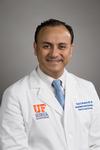Research Terms
Industries
This treatment for low testosterone uses a general anesthetic in low, sedative concentrations to improve long-term natural testosterone production in males. Male hypogonadism is a state of low circulating testosterone that causes many physical and mental symptoms. Certain genetic or congenital diseases, testicular injuries, and simply aging can lead to deficient levels of testosterone. Analysts expect the highly competitive global market for testosterone replacement therapy to be worth $1.4 billion in 2024. More than 80 percent of men abandon testosterone treatments after just one year. Available testosterone replacement therapies involve increasing testosterone levels exogenously through topical gels and patches, intravenous injections, or subcutaneous implants. Gels and patches require regular application and can harm women or children who might contact men wearing them. Likewise, injections and implants can be painful, invasive, and highly inconvenient.
Researchers at the University of Florida have developed an approach using a general anesthetic in low, sedative concentrations that increases endogenous testosterone production in males. The non-invasive, safe treatment may improve low testosterone conditions owing to disease or injury and relieve age-related testosterone deficiency.
Sevoflurane vapor that increases serum levels of testosterone
This low dosage of sevoflurane in vapor form increases systemic levels of testosterone. The treatment does not supplement exogenous testosterone, but rather augments the endogenous production of testosterone in a subject through inhalation of a compound containing sevoflurane, a safe and FDA-approved general anesthetic. Animal data confirms an increase in serum level of testosterone by approximately 70 percent for more than 3 months compared to controls and demonstrates no obvious effects on fertility and reproduction.
This web application enables efficient management of healthcare provider staffing in academic hospitals. Increasing healthcare costs are a driving force behind change in the medical goods and services industry, which has estimated costs above $2.8 trillion per year in the United States. Approximately 30 percent of hospital expenses – over $700 per inpatient per day – may be wasted funds associated with poorly managed provider staffing and other inefficiencies. The ability of a hospital department to accurately assess its staffing needs, using resource-based reimbursement parameters, is likely to be especially important in efforts to control spending and limit waste. Employing an anesthesiologist staffing model, researchers at the University of Florida have developed a web app that uses relative value units (RVUs) to predict changes in provider staffing needs for user-selected mixtures of medical services. This software will help academic anesthesia departments optimize faculty utilization and may be adapted to enable efficient staffing procedures in other healthcare environments in which RVUs are routinely used.
Web app that determines the most optimal staffing of healthcare providers in a variety of treatment contexts
This web application is coded to demonstrate the impact of several financial variables on the staffing of academic anesthesiology departments. The web app inputs custom mixtures of nerve block/rounding encounter types, RVUs generated per event, and payer mixture of reimbursement per RVU. The web app then demonstrates changes in RVU/reimbursement based upon increasing numbers of blocks/encounters, utilizing the user-selected information. This allows a department to highlight areas of increased institutional support needs, as well as to determine whether the department is overstaffed or understaffed at any time.


















































































































PO 100254 MSB M-509 1600 SW ARCHER RD GAINESVILLE, FL 32610-0254

